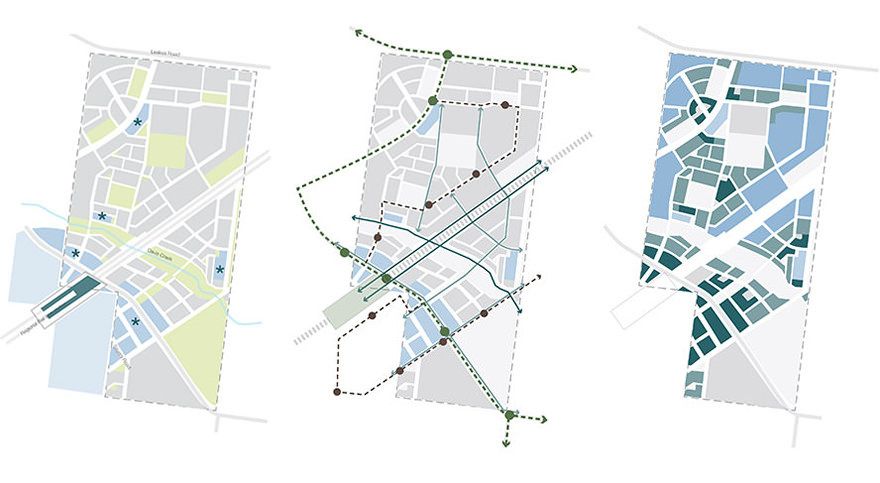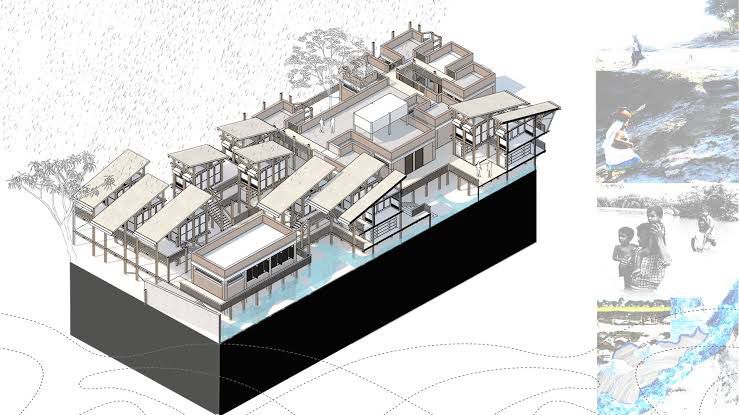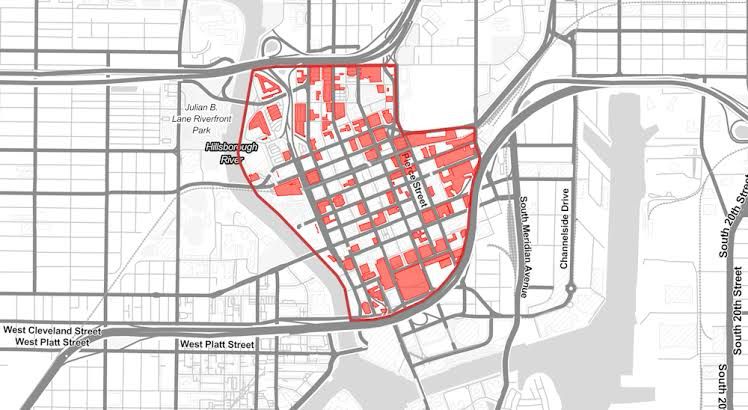Structuring cities to accommodate cars above all else leads to negative environmental and societal outcomes.
05.07.2025 04:01 — 👍 0 🔁 1 💬 0 📌 0
Relying exclusively on one type, whether tall towers or only low buildings, can lead to monotony and dysfunction.
Like in life, a balanced mix fosters resilience, interest, and vitality in urban spaces.
14.07.2025 05:44 — 👍 0 🔁 0 💬 0 📌 0
Successful cities are characterized by a mix of building types, scales, and uses—skyscrapers, mid-rises, low-rises, and public spaces—layered together to create vibrant, adaptable environments.
14.07.2025 05:44 — 👍 0 🔁 0 💬 1 📌 0

Urban planning and accessibility ensure all people can easily reach services, public spaces, and opportunities.
This is achieved through intentional design of infrastructure, transportation, and amenities that remove physical, economic, and social barriers.
09.05.2025 05:13 — 👍 4 🔁 2 💬 1 📌 8

Resilient design creates buildings that can withstand, adapt to, and recover quickly from climate-related hazards.
This approach is increasingly important as climate change intensifies the frequency and severity of extreme weather events.
08.05.2025 19:00 — 👍 3 🔁 2 💬 1 📌 8

EVs Drive Harm Reduction: Cutting Emissions, Boosting Air Quality, and Lowering Health Risks Compared to Traditional Cars
EVs are a clear form of harm reduction compared to traditional cars—they cut emissions, improve air quality, and lower some health risks. They do not solve broader issues tied to car dependence, su…
EVs are a clear form of harm reduction compared to traditional cars—they cut emissions, improve air quality, and lower some health risks.
They do not solve broader issues tied to car dependence, such as urban planning, traffic safety, and social inequality.
15.05.2025 17:01 — 👍 2 🔁 1 💬 0 📌 29
Downtown Los Angeles has a parking coverage of about 81%, and Houston is at 57%.
This extensive allocation persists despite high land values and demand for more productive uses such as housing, offices, or public spaces.
13.07.2025 08:24 — 👍 0 🔁 0 💬 0 📌 0
In Denver, large swaths of prime downtown real estate are used for surface parking lots and single-use garages, which are often seen as underutilized and detrimental to the urban environment.
09.07.2025 05:56 — 👍 1 🔁 0 💬 1 📌 0

Even in expensive cities with high demand, a significant portion of downtown land is still devoted to parking.
Studies show that in major city centers, the median percentage of land dedicated solely to parking is about 26%.
09.07.2025 05:55 — 👍 1 🔁 0 💬 1 📌 0
Cities that prioritize cars over sustainable transport options like public transit, walking, and cycling not only harm the environment but also reduce overall liveability and quality of life for residents.
08.07.2025 04:40 — 👍 0 🔁 0 💬 0 📌 0
Most urban transport emissions come from cars, which are the least space- and energy-efficient mode of urban transport, making them a major contributor to climate-warming greenhouse gases.
08.07.2025 04:40 — 👍 0 🔁 0 💬 1 📌 0
Designing cities with cars as the main focus is detrimental to the environment because car-centric planning leads to increased greenhouse gas emissions, air pollution, and urban sprawl.
08.07.2025 04:40 — 👍 1 🔁 0 💬 1 📌 0
Structuring cities to accommodate cars above all else leads to negative environmental and societal outcomes.
05.07.2025 04:01 — 👍 0 🔁 1 💬 0 📌 0
Cities like Venice and Barcelona demonstrate that modern urban life can thrive without prioritizing cars.
Venice is entirely car-free, relying on walking and water transport, while Barcelona’s “superblocks” restrict car access to create pedestrian-friendly neighbourhoods.
05.07.2025 04:01 — 👍 1 🔁 0 💬 1 📌 0
Designing modern cities around cars is unsustainable and counterproductive.
India’s urban future depends on shifting priorities toward public transport, active mobility, and people-centric planning.
05.07.2025 04:00 — 👍 0 🔁 0 💬 0 📌 0
Surge in private transport is already straining urban infrastructure, increasing pollution, and demanding vast amounts of land for parking—every quarter minute.
India needs a parking space the size of a soccer field to accommodate new registrations.
05.07.2025 04:00 — 👍 0 🔁 0 💬 1 📌 0
Despite policy efforts, implementation remains inconsistent, and public transport’s modal share in Indian cities is only about 25%, compared to 35-45% for personal vehicles.
04.07.2025 07:18 — 👍 0 🔁 0 💬 0 📌 0
India’s urban transport has historically prioritized vehicles over pedestrians, resulting in underdeveloped public transit and fragmented planning.
04.07.2025 07:18 — 👍 0 🔁 0 💬 1 📌 0
In 2024-25 alone, India registered 25.5 million vehicles, with over 88% being personal vehicles.
India’s rapid rise in private vehicles is overloading infrastructure, worsening pollution, and requiring a soccer field’s worth of new parking every 15 minutes.
04.07.2025 07:18 — 👍 1 🔁 0 💬 1 📌 0
Increasing urban tree cover to 30% could prevent about one third of these deaths, demonstrating the significant health benefits of expanding green spaces in urban environments.
26.06.2025 06:30 — 👍 0 🔁 0 💬 0 📌 0
Over 4% of summer mortality in European cities is attributable to urban heat islands.
During the summer months, urban heat islands were responsible for 4.3% of total deaths in cities, which translates to approximately 6,700 premature deaths.
26.06.2025 06:30 — 👍 0 🔁 0 💬 1 📌 0
23.06.2025 05:46 — 👍 1 🔁 0 💬 1 📌 0
23.06.2025 05:46 — 👍 0 🔁 0 💬 0 📌 0
23.06.2025 05:46 — 👍 0 🔁 0 💬 0 📌 0
23.06.2025 05:45 — 👍 0 🔁 0 💬 0 📌 0
23.06.2025 05:45 — 👍 0 🔁 0 💬 0 📌 0
23.06.2025 05:44 — 👍 0 🔁 0 💬 0 📌 0
Studies show that sea breezes from the east and south interact with urban morphology to influence precipitation and temperature.
Enhancing marine airflow through urban corridors helps regulate urban microclimate and reduce heat stress.
22.06.2025 08:44 — 👍 0 🔁 0 💬 0 📌 0
Tokyo, with a humid subtropical climate, experiences sea breezes that interact with urban heat islands and topography to influence local weather patterns, including convective storms.
Urban design that facilitates sea breeze penetration can moderate these effects.
22.06.2025 08:43 — 👍 0 🔁 0 💬 1 📌 0
Strategic placement of vegetation along corridors can provide shade and reduce heat while maintaining airflow.
Open spaces near the shoreline can act as ventilation corridors or “breezeways”.
22.06.2025 08:43 — 👍 0 🔁 0 💬 1 📌 0
Australian independent architecture and urban design practice. RTs are not endorsements.
Senior Energy and Climate Data Analyst @emberenergy.bsky.social
Finding, curating and explaining the data behind the global energy⚡️transition.
— Founder of Our World in Data
— Professor at the University of Oxford
Data to understand global problems and research to make progress against them.
Ph.D. Architect. Dad of two. Reposting or liking ≠ endorsement.
Architecture critic @theglobeandmail.com. Also author, University of Toronto Daniels Faculty instructor, husband, father of two city kids.
https://www.theglobeandmail.com/authors/alex-bozikovic/
Bikes + data, UofT biophys PhD, mom.
I post about bikes and safe streets, local politics, and sometimes science. She/her.
The author of all photos on this profile is me.
© Martin Zeman
At work photographer from Czech Republic.
Outside of work: running, traveling and movies.
Photo work: www.DAtelier.cz
Video work: www.RAWpictures.cz
Travel: www.PribehFotografie.cz
Vancouver, BC
Co-owner & Lead Designer
Lanefab Design/Build
B.Eng M.Arch
Build beautiful.
Build for a livable climate.
www.Lanefab.com
#ThickWallsAreSexy / #SingleStair / #ElectrifyEverything / #Passivhaus / #NetPositive
🎙️ Voice-over artist | 📸 Photographer | ⭕️ Phish
🌄 Capturing Colorado’s essence | 🐬 Fins up!
📍 Boulder, CO
📷 All photos by me unless noted
🔗 viningcreativephoto.com
Toronto/Scotland.
Art, nature, probably birds.
Museums + archives.
Travelling Fifer.
She/her. Views own.
Hi, my name is Anne P Here you can find very useful information about #construction, #civil, #BIm, #SketchUp-related tasks.
Established in 1972, we are the official publication of the Institution of Civil Engineers, providing daily news, views and insight on the wide world of the built environment, engineering, infrastructure and the future of our planet.
I like wandering around and looking and buildings and cities.
I MIGHT MAKE INANE COMMENTS ABOUT THEM IN CAPS.
I’m generally too lazy to think or remember much.
WILLIAM TOZER Associates (WTAD) UK architects | working EU USA AU NZ • award-winning practice • est. 2002 | http://williamtozerassociates.com | founder: Dr William Tozer @williamtozer.bsky.social
Art Deco, Modernism and Brutalism in London's suburbs and beyond. https://www.modernism-in-metroland.co.uk
The national charity campaigning to protect Britain’s modern architectural and design heritage. Reuse Them or Lose Them!
www.c20society.org.uk
Writer + Editor | Architecture + Cities | Senior Editor, Azure Magazine
AZURE is an award-winning magazine with a focus on contemporary architecture and design. Launched in 1985.
Writer, editor, PR, enthusiast (buildings) | Director at The London Society | Chair of Museum of Architecture | Trustee for Blackhorse Workshop



